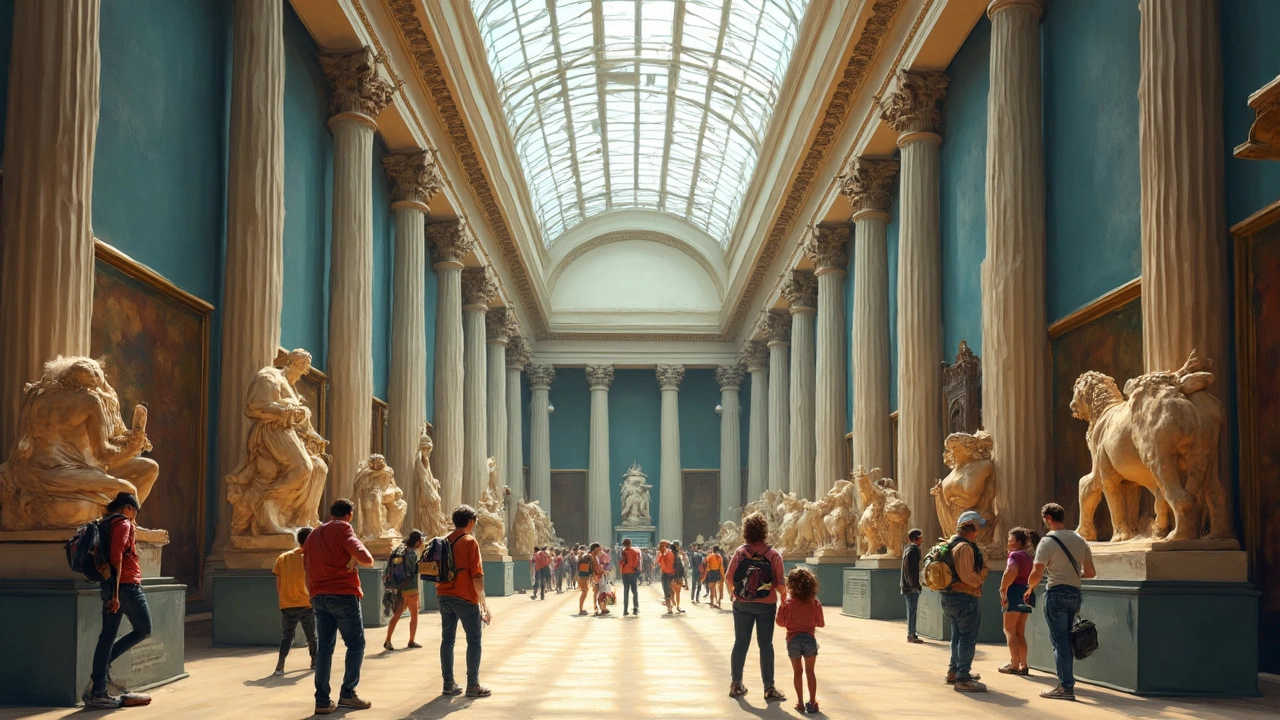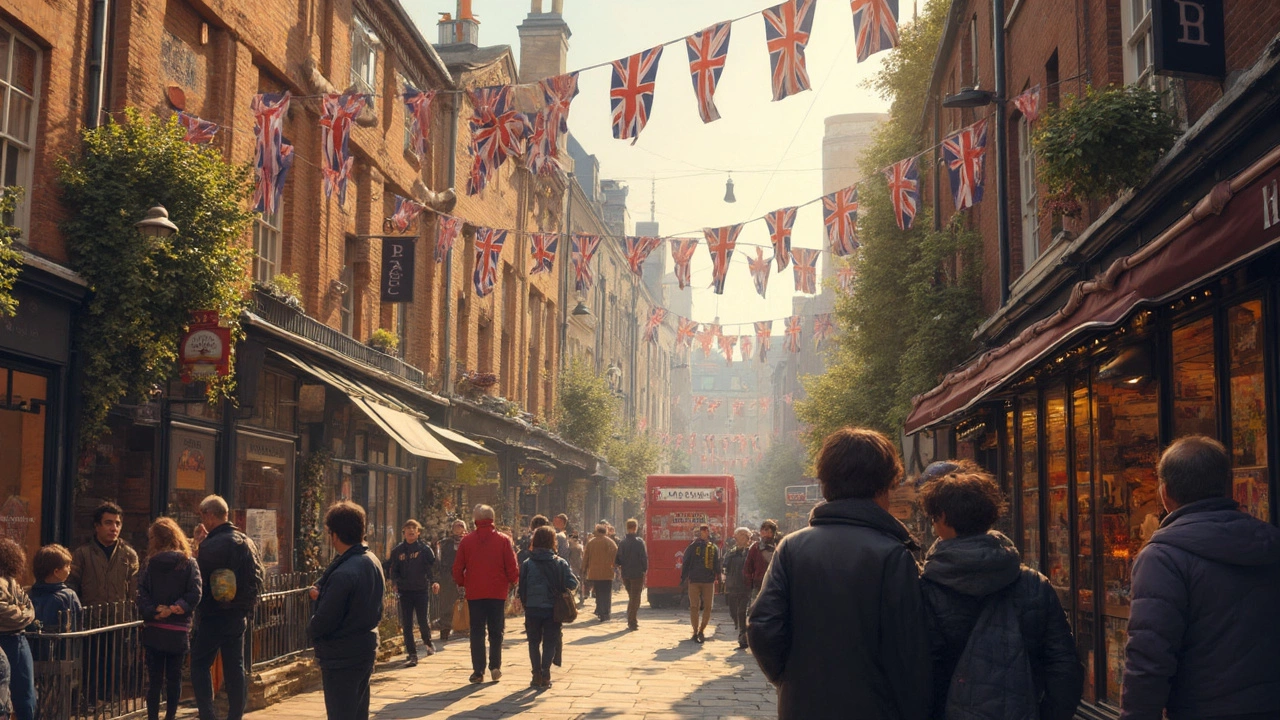When you think about memorable travels, it's so often those moments of real connection with a place’s culture that stick with you. So where do you start finding genuine cultural attractions? It's not just about old ruins or crowded museums—there’s a whole buffet of options out there.
Picture strolling through bustling local markets or catching a street performance in the heart of a city. Cultural attractions are basically the heartbeat of a place. They’re the museums where you finally understand why that artist matters, theaters that give you goosebumps, ancient castles that make you want to learn the local legends, or colorful festivals that turn strangers into instant friends. For a richer travel experience, it’s smart to mix and match a few of these, because each will give you a fresh angle on the local way of life.
- Museums: More Than Just Paintings
- Historic Landmarks That Tell a Story
- Festivals and Events: Culture in Motion
- Performance Venues and Local Crafts
Museums: More Than Just Paintings
When most people hear "museum," they either think of dusty paintings or standing in front of statues they don’t really get. But museums are way more than a gallery of old art. For starters, there’s the Louvre in Paris. Sure, it’s got the Mona Lisa, but it also houses Egyptian mummies, Greek statues, and a massive collection of artifacts from all over the world. If you’re in New York, the Metropolitan Museum of Art doesn’t just cover art—it’s got rooms set up to look like ancient Egyptian temples, actual samurai armor, and even old baseball cards.
Not all museums are giant and famous, either. Smaller local museums give you a glimpse into daily life, like the Museum of Broken Relationships in Zagreb, Croatia, where people donate relics of past romances. It’s a different kind of cultural attraction, but it definitely leaves a mark on visitors.
- Science museums explain how stuff works—with hands-on experiments and real dinosaur fossils. Think of the Science Museum in London or the Smithsonian National Air and Space Museum in Washington, D.C.
- Museums about food, like the Currywurst Museum in Berlin, celebrate local flavors and quirky traditions.
- Some museums are outdoors—think open-air villages that recreate old homes, farms, or workshops. These places, like Skansen in Stockholm, let you see how people actually lived years ago.
If you hate waiting in line and crowds, plan your visit for a weekday morning. Big museums usually offer discounted or even free entry on certain days—handy if you’re on a budget. Many also have awesome apps or guided tours to help you understand what you’re seeing, making it less about memorizing facts and more about getting the story behind each piece.
| Famous Museum | Location | Annual Visitors |
|---|---|---|
| Louvre | Paris, France | 8 million |
| Metropolitan Museum of Art | New York, USA | 6.3 million |
| Smithsonian National Air and Space Museum | Washington, D.C., USA | 7.1 million |
So don’t write off museums as boring. When you’re exploring cultural attractions, these spots are packed with all the weird, fun, and eye-opening stuff that lets you actually feel a place’s history and creativity.
Historic Landmarks That Tell a Story
When you think about cultural attractions, historic landmarks are probably the first thing that comes to mind. They’re not just old buildings or tourist photo-ops—each one is part of a living story that shapes a place’s identity.
Let’s talk specifics. Think about the Colosseum in Rome. This ancient arena once hosted gladiator battles and dramatic events nearly 2,000 years ago. About 7 million people visit each year, making it one of the world’s most popular historic sites. Over in the States, you’ve got the Statue of Liberty—a symbol of freedom that welcomed millions of immigrants into New York Harbor. The statue stands at 93 meters tall (if you count the pedestal) and has been a National Monument since 1924.
There’s also Machu Picchu in Peru, perched high in the Andes. Its exact purpose is still a mystery, but most historians agree it was built around 1450 by the Inca emperor Pachacuti. Today, it’s one of the New Seven Wonders of the World and draws hikers and history lovers from everywhere.
If you love data, check out just how many folks flock to these spots every year:
| Landmark | Country | Annual Visitors (approx.) |
|---|---|---|
| Colosseum | Italy | 7 million |
| Statue of Liberty | USA | 4.5 million |
| Machu Picchu | Peru | 1.5 million |
| Acropolis | Greece | 2.5 million |
Not all iconic landmarks have to be ancient or massive. Sometimes it’s that preserved main street, that old lighthouse still guiding ships, or a single-room schoolhouse in the middle of nowhere. For example, Berlin’s East Side Gallery is a stretch of the old Berlin Wall covered in murals by over 100 artists from around the globe. It’s powerful, free to visit, and tells a very recent story about division and reunification.
Here are a few tips when visiting historic sites to really make them count:
- Read up on the history beforehand—knowing the background makes everything click.
- Look for guided tours or audio guides. You’ll catch stories and facts you’d never notice on your own.
- Go early or late in the day to dodge crowds, especially at popular cultural attractions.
- Pack good shoes and water. Some places, like castles or ancient temples, mean climbing lots of stairs.
Historic landmarks do more than fill your camera roll. They’re your shortcut to understanding what made a city, a region, or even a whole country tick. And honestly, they make for better stories at dinner parties when you’re back home.

Festivals and Events: Culture in Motion
When you're after true immersion, nothing beats jumping into a real festival or local event. Cultural attractions like festivals are where you see locals let loose, traditions come alive, and everyday routines get flipped upside down for a day—or sometimes a whole week. Traveling during festival time almost guarantees stories you'll tell forever.
Think about it: in Spain, the "La Tomatina" festival turns a sleepy town into a massive tomato-throwing arena every August. It’s wacky, but the togetherness is real. Or look at the Rio Carnival in Brazil, which pulls in over two million people to its world-famous parades, all swirling with music, elaborate costumes, wild dancing, and street food you’ll crave forever. Just remember, big festivals like these mean crowded streets and higher hotel prices, so plan ahead.
Plenty of cultural attractions are smaller but just as awesome. Germany’s Christmas markets fill cities with glowing lights and the smell of roasted nuts. In my own travels, Ethan and I once stumbled into a local lantern festival in Taiwan—the sky literally filled with hundreds of glowing lanterns. Small events like this let you mingle with locals and taste homemade snacks that’d never make it to a fancy restaurant.
If you want to actually catch these cultural attractions, you’ve got to check city calendars or tourism boards before you visit (trust me, scrambling for last-minute tickets at a major event is no fun). Here are a few practical tips for enjoying festivals:
- Book your stay early, especially if it’s a famous festival—rooms fill up fast.
- Look up the main events so you don’t miss the best stuff.
- Dive into the typical foods and customs—this is where you’ll really taste the difference.
- Bring cash for pop-up stalls. Credit cards aren’t always welcome in street markets.
- Dress like the locals do. Sometimes that means lots of layers or a rain poncho!
Here's a quick peek at just how huge some cultural attractions get during festival season:
| Festival | Country | Average Visitors |
|---|---|---|
| Rio Carnival | Brazil | 2 million+ |
| Oktoberfest | Germany | 6 million+ |
| Diwali | India | Celebrated by over 1 billion |
Chasing festivals and local events is one of the best ways to dig into a culture for real, not just snap a photo and move on. Be ready to join in, no matter how odd the tradition seems at first!
Performance Venues and Local Crafts
If you really want to experience the heart and soul of a city, check out its performance venues and local craft spots. Every place seems to have a quirky theater, a lively concert hall, or even a pop-up open mic night in some basement bar. These are perfect places to catch traditional dance, modern theater, or live bands and see what the locals are buzzing about. For example, London's West End is famous for world-class theater, and places like Vienna's State Opera pack every seat with music lovers from around the world. Even small towns often have open-air stages or summer music fests.
Some venues are historic attractions all by themselves. Think of Teatro alla Scala in Milan or the Sydney Opera House—people come from all over just to take a tour, even if they can’t snag tickets to a performance. Here’s a quick look at a few iconic performance venues and what they’re known for:
- Royal Albert Hall in London — Huge range of music, from pop to classical, and the famous Proms every summer.
- Carnegie Hall in New York — Legendary for its classical concerts and surprising lineup of famous rock musicians too.
- National Centre for the Performing Arts in Beijing — Stunning modern architecture and all kinds of shows inside.
Stepping into the world of local crafts is like holding a piece of a place’s story. Markets and workshops can be found all over: pottery from Oaxaca, textiles from Jaipur, hand-blown glass from Murano. These crafts aren’t mass-produced souvenirs—you often get to chat directly with the makers, watch them work, and even get your hands dirty trying out a traditional technique.
In some regions, local crafts are a big part of cultural identity and economy. For example, Morocco’s Fes el-Bali is home to more than 10,000 skilled artisans as of 2024, keeping centuries-old skills alive. Picking up crafts directly from workshops is not just cool—it puts money right into the hands of families who rely on those skills.
Tips for getting the most from these cultural attractions:
- Ask locals about small shows or markets—they often know more interesting spots than any guidebook.
- Look for venues with unique local acts, not just touring shows.
- Try a quick class or demo, even if you’re not artsy. It makes the experience stick.
- When you buy crafts, check if there’s a short story behind the item. Most sellers are happy to share.
It’s not just about buying stuff or watching a show—it’s about experiencing the modern culture and history, all in one go.
